Some assembly required – NATO Allies and soon-to-be Ally Sweden train to keep Gotland secure
After more than 200 years of military non-alignment, Sweden is in the process of joining NATO and will help strengthen Euro-Atlantic security as a new Ally. During exercise BALTOPS 22, Swedish troops trained with US Marines and other Allied forces on the Swedish island of Gotland in the Baltic Sea.
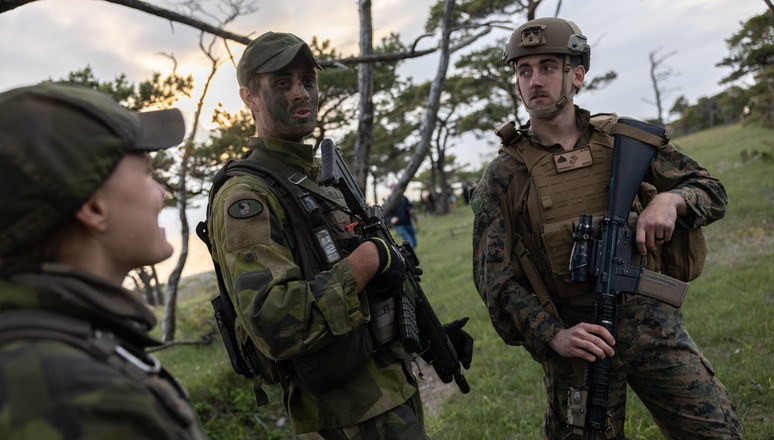
A US Marine rifleman (right) chats with members of the Swedish Home Guard stationed on the island of Gotland during Exercise BALTOPS 22, which included 16 NATO Allies and partners.
"I'm sorry sir," said the US Marine Lieutenant, "I don't speak any Swedish. Is English OK?".
"Sure," the farmer said. In Sweden, practically everyone is multilingual.
The officer introduced himself and explained that his platoon was here on the island of Gotland for Exercise Baltic Operations 22 (BALTOPS 22), a US-led military exercise hosted by Sweden. Would it be OK if they cut through the farmer's property to reach their objective?
"Of course," said the farmer. With thanks, the lieutenant waved his platoon on, and soon, a file of Marines bristling with rifles and communications gear moved down the dirt road, passing a field of cud-chewing cows under a powder-blue sky.
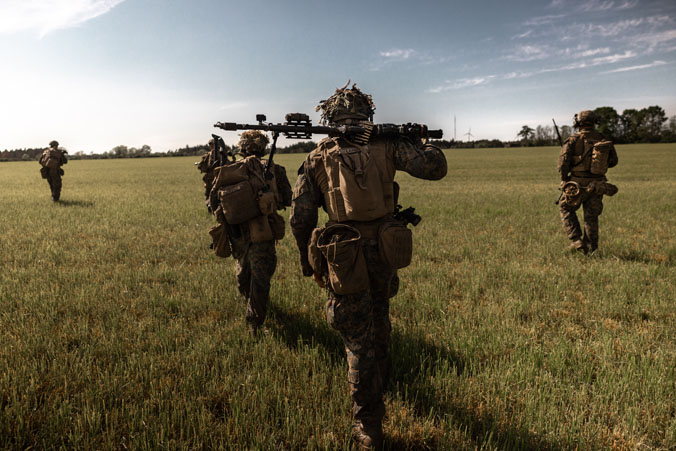
US Marines cross a field on the Swedish island of Gotland during Exercise BALTOPS 22.
Defending the key to the seas
As the sun shone down on the peaceful rural landscape, the US Marines moved onwards to carry out their primary objective: repelling the simulated invasion of Gotland.
The defence of the island is an important part of the larger BALTOPS exercise scenario, which is designed to strengthen forces' abilities to respond to threats across the region, with the ultimate goal of preserving the freedom of navigation and security in the Baltic Sea.
Bucolic in summer and storm-swept in winter, Gotland is more than just beachside cottages and sheep pastures. Sitting between the Baltic coasts of Sweden and Latvia (and along the maritime route between Saint Petersburg and the Russian exclave of Kaliningrad), Gotland is key to controlling the surrounding seas and would be a highly valuable target in any conflict.
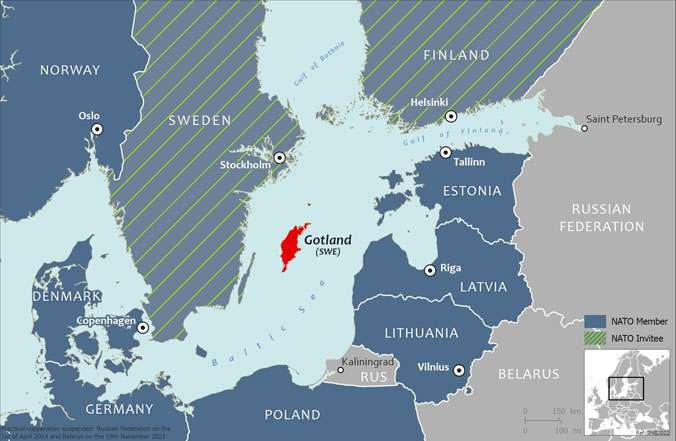
Gotland is located in the middle of the Baltic Sea, which is bordered by nine countries.
This is why Sweden is determined to defend Gotland and its approximately 60,000 residents against any threat. Doing so may require speedy reinforcement, and Sweden has well-rehearsed methods of rushing troops to the island. Some are fairly conventional – utilising a fleet of civilian ferries to haul hundreds of troops and vehicles, for example – and others, less so.
During BALTOPS 22, Swedish air controllers landed a C-130 Hercules (which has a wingspan of 40 metres and can weigh over 70,000 kilograms when fully loaded, depending on the model) on a rural road north of the island's capital, Visby, while Gripen fighters sliced through the sky above. The burly transport hogged the asphalt as it taxied, pulled an about-face, and disgorged a platoon of Swedish Rangers lugging assault rifles and anti-tank missile launchers.
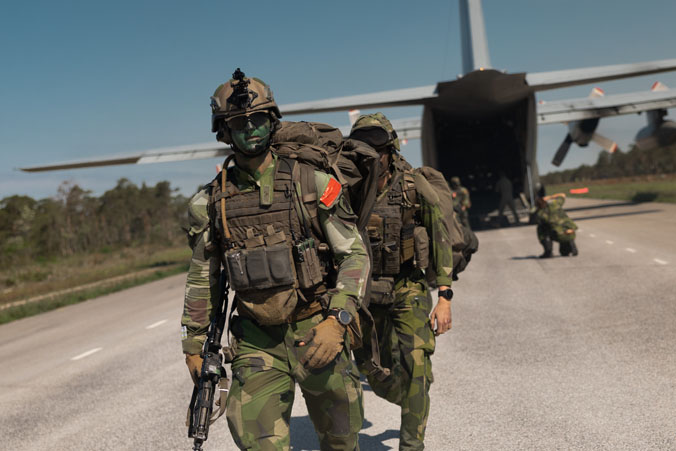
Swedish Army Rangers disembark a C-130 Hercules transport aircraft after landing on a rural road on the Swedish island of Gotland during Exercise BALTOPS 22.
The US Marines, meanwhile, practised coming ashore from the amphibious landing ship USS Gunston Hall. Their light armoured vehicles, or LAVs, splashed off the landing craft and drove onto the pebbly beach of Gotland's Tofta Training Area. They then linked up with a contingent of Swedish troops and armour from Sweden's Gotland Regiment before heading north to repel the notional invaders.
The Gotland Regiment – whose flag bears a heroic ram carrying a red banner, based on the island's coat of arms – is itself a sign of the times, having been reactivated in 2018 after a 13-year dormancy.
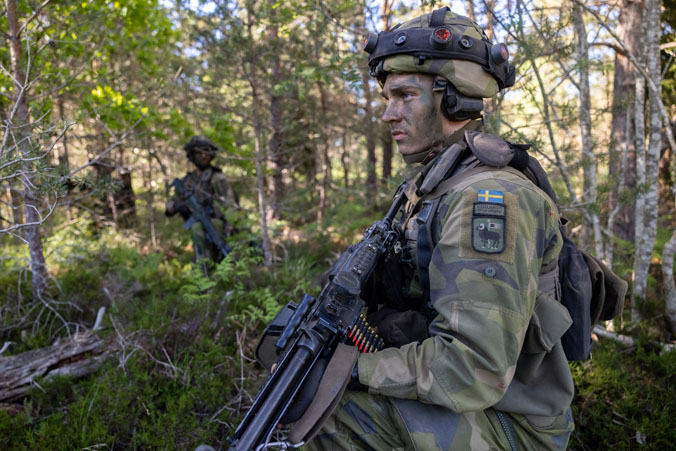
A Swedish soldier – with the Gotland Regiment insignia on his uniform – waits for orders to move out in Tofta Training Area on the Swedish island of Gotland during Exercise BALTOPS 22.
For its commander, Colonel Magnus Frykvall, the regiment's mission has never been more relevant, or personal.
"I mean, everything is much more real," he said, standing on Tofta Beach as US Marines crunched on the rocks behind him.
Russia's full-scale invasion of Ukraine on 24 February 2022 was a wake-up call, showing how far this Baltic Sea neighbour was willing to go. But Sweden had already been introducing new measures to strengthen its defensive posture since Russia's illegal annexation of the Ukrainian peninsula of Crimea in 2014. Sweden reintroduced military conscription in 2017, calling thousands of men and women into service. It undertook a robust public information campaign to raise awareness about Sweden's total defence concept, which would align civil and military efforts in a whole-of-society effort to resist foreign aggression.
"I feel secure, and I really feel that my work has meaning," said Colonel Frykvall. "And it's important. I mean, we are appreciated from the civilian society in a bigger way than we were earlier. So it's a big difference."
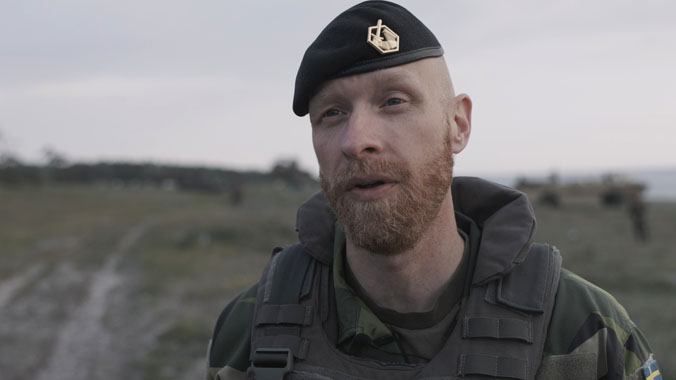
Colonel Magnus Frykvall, commander of Sweden's Gotland Regiment
From military manoeuvres to diplomatic discussions
BALTOPS 22 wasn't the first time that US troops have marched down the roads of Gotland, nor was it the first time that Sweden and NATO Allies have teamed up for a military exercise. But it was hard to deny that this time felt different. There is war on the European continent, and the security environment has changed so drastically that Sweden has abandoned its long-held military non-alignment and has begun the process of joining the Alliance, alongside Finland.
Sweden has been a NATO partner since the mid-1990s, maintaining a close working relationship with the Alliance – even sending forces to participate in military operations like the International Security Assistance Force (ISAF) in Afghanistan – while avoiding both the obligations and the guarantees that come with full NATO membership. This cooperation has deepened since 2014 (another measure that Sweden took following Russia's illegal annexation of Crimea), with more joint military exercises and increased political dialogue – culminating in Sweden's official application for NATO membership in May 2022.
As the US Marines and Swedish Rangers moved into attack positions, politicians in Stockholm and Brussels continued to discuss Sweden's entry into the Alliance. A year ago, this would have been unthinkable – neutrality was as Swedish as flat-pack furniture, a political hallmark and even a point of pride.
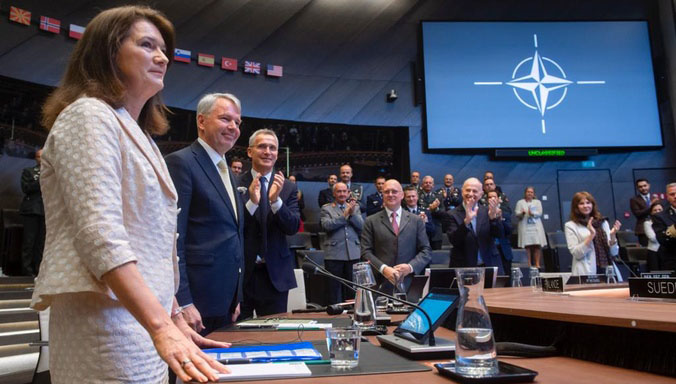
Sweden and Finland were invited to join the Alliance at the Madrid Summit in June 2022. Their Accession Protocols were signed by all 30 Allies at NATO Headquarters in Brussels on 5 July 2022, making them official NATO Invitees. Here, Swedish Foreign Minister Ann Linde and Finnish Foreign Minister Pekka Haavisto are applauded by the Secretary General and Allied ambassadors to NATO.
But for the Swedish military – and for Sweden's government and society, a majority of whom support NATO membership – there was the world before 24 February, and the world we live in now.
"The threat is real," said Colonel Frykvall. "And we have seen what, in this case, Russia is prepared to do to a neighbouring country."
This article is part of a series of dispatches from the field, showing what life is like on the ground for NATO and partner armed forces. Check out the other articles for more stories of troops exploring new countries, enduring the elements and cooperating with friends.
